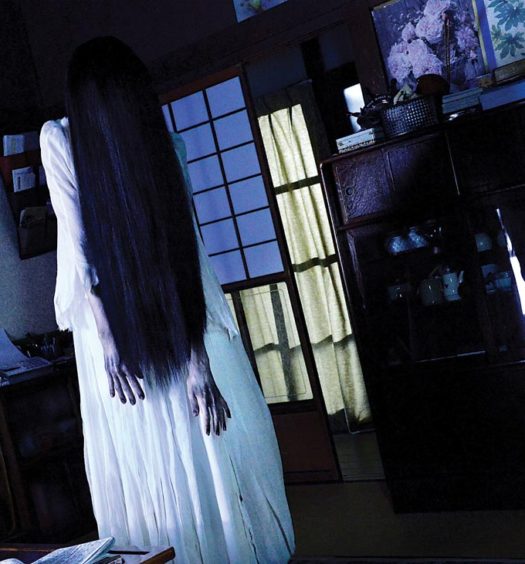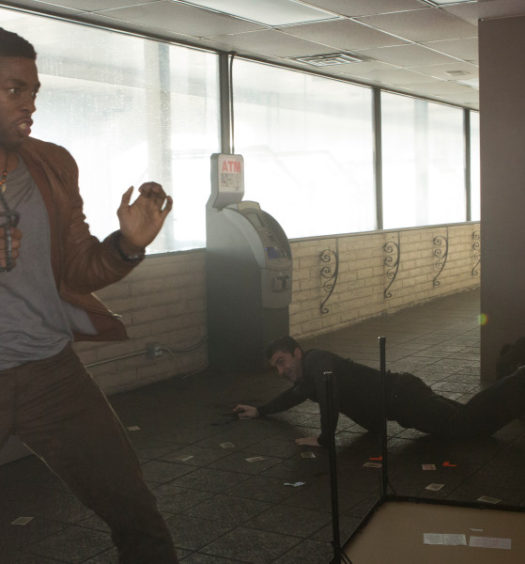While André Øvredal’s Troll Hunter combined mythical monsters and found footage in a way that was both suspenseful and funny, his latest film, The Autopsy of Jane Doe, is straight-up horror. It’s also a huge leap forward for the filmmaker in terms of his ability to sustain a genuinely frightening atmosphere.
Opening with a grisly crime scene in a well-appointed suburban home, the film begins much like a procedural with cops and forensic investigators gathering evidence and taking photos. Then it moves into a new, yet perhaps even more gruesome sphere: a morgue. This morgue is managed by a father and son team of coroners, with Brian Cox as the elder Tony and Emile Hirsch as Austin. The Tildens have been asked to find out what killed this particular Jane Doe, who was discovered at the aforementioned crime scene by Sherriff Sheldon (Michael McElhatton). She’s not related to any of the victims found in the home and unlike them, she is curiously unscathed by bullet wounds.
Scriptwriters Ian B. Goldberg and Richard Naing do a tremendous job of dispensing little nuggets of information that become important later in the movie, while still maintaining a macabre believability about the proceedings. They also include a fair bit of levity that helps break the tension of the morbid narrative.
As for the autopsy itself, the practical effects are disgustingly good, and Øvredal and cinematographer Roman Osin make sure we see every speck of viscera.
The color palette is gorgeous, thanks to exquisite production design and lighting. As if setting a horror movie in a morgue wasn’t creepy enough, The Autopsy Of Jane Doe sets this particular one inside the basement of the Tilden home. The gothic atmosphere of the house—all antique wood paneling, dark carpets, and the warm glow of lamplight—spills over into the morgue, which despite being full of harsh lighting and metallic surfaces, still bursts off the screen. As for the autopsy itself, the practical effects are disgustingly good, and Øvredal and cinematographer Roman Osin make sure we see every speck of viscera.
Composers Danny Bensi and Saunder Jurriaans provide a score that immediately sets up a suspenseful tone. There are a lot of jump scares in the movie, but they are all well-earned with payoffs that feed right into the narrative. Some might find the frightening iconography used throughout the film too simplistic, but sometimes simple is both the scariest and the most effective.
There’s a lot going on in The Autopsy Of Jane Doe. At its core, it exploits the most basic of all body horrors, in this case a dead one. It also delves into both the supernatural and slasher subgenres in an inventive way. The Jane Doe of the movie’s title may be lying dead on an examination table, but she casts a powerful spell over the film. There are multiple close ups of her face from different angles, some of which render her blank expression as purely sinister. It’s disturbing to see a naked, prone woman being subjected to the male gaze in such an aggressive way, but it plays right into the narrative of the film.
…The Autopsy Of Jane Doe is still a tremendously thrilling horror film that provides plenty of genuine scares and food for thought.
The second half of The Autopsy of Jane Doe is, admittedly heavy on exposition, but a consideration of the gender politics at play—both those that put her in the morgue in the first place as well as the past histories of both Tommy and Austin Tilden—make the subtext of the film quite provocative indeed. While this might turn off some viewers, The Autopsy Of Jane Doe is still a tremendously thrilling horror film that provides plenty of genuine scares and food for thought.
The Autopsy Of Jane Doe received its world premiere at the Toronto International Film Festival on Thursday, September 15.
The Autopsy Of Jane Doe [TIFF Review]
Scary
































February 4, 2019
[…] It’s also a book series that’s getting a big-screen adaption with director André Øvredal (The Autopsy of Jane Doe, Trollhunter) behind the camera and Guillermo del Toro (Pan’s Labyrinth, Hellboy, The Shape of […]